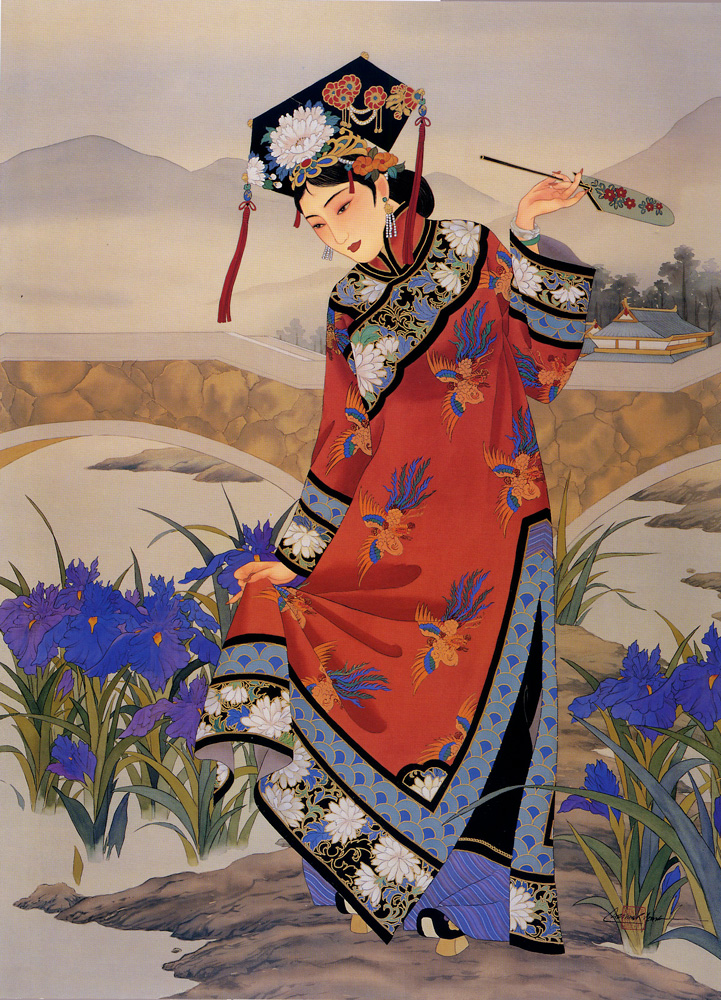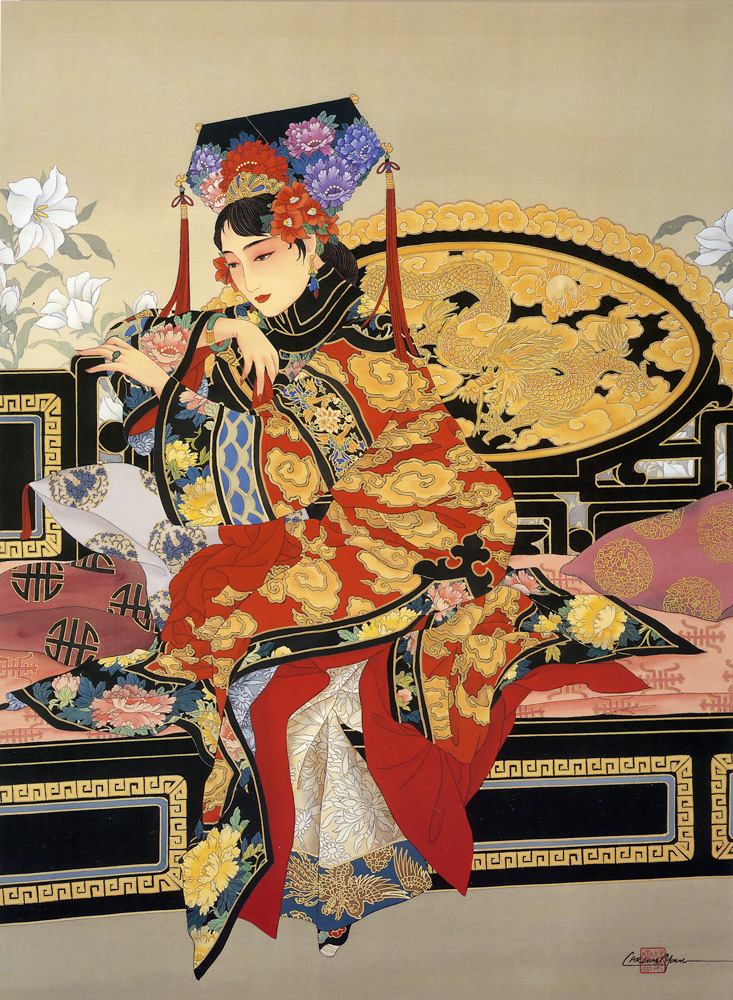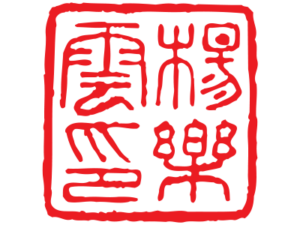Caroline Young, artwork and text
Source: The art of Caroline R. Young (2002)
 On the hem of the Empress’ garment, worn beneath her robe, is the symbol of the Empress, the eternal Phoenix.
On the hem of the Empress’ garment, worn beneath her robe, is the symbol of the Empress, the eternal Phoenix.
The color red is prominent in this composition, notably for its promise of good luck, power and prosperity.
Also symbolic of these qualities are the elegant peonies found on her head-dress and splendid silk apparel.
The Chinese characters on the cushions beside her foretell of long life, and the royal dragon with extended claws on the back of her throne denotes her Imperial status.
The Qing Dynasty, founded by the Manchus, lasted from 1636 to 1912. The Manchurian Emperors were great patrons of the arts, and the greatest of all was Emperor Chien Lung.
 During his 62 year reign, he and his Empress Pan Ping Chang commissioned and collected countless works of priceless art, painting, architecture, porcelain and thus the decorative arts flourished under his largely peaceful reign. To properly display their spectacular collection the Imperial Couple ordered the building of Yuan-zing-yuan, a magnificent Rococo-style palace, the finest example of Western architecture in Asia. Much of what exists today in the way of Chinese art was produced during the benevolent rule of Chien Lung and his beautiful Empress Pan Ping Chang.
During his 62 year reign, he and his Empress Pan Ping Chang commissioned and collected countless works of priceless art, painting, architecture, porcelain and thus the decorative arts flourished under his largely peaceful reign. To properly display their spectacular collection the Imperial Couple ordered the building of Yuan-zing-yuan, a magnificent Rococo-style palace, the finest example of Western architecture in Asia. Much of what exists today in the way of Chinese art was produced during the benevolent rule of Chien Lung and his beautiful Empress Pan Ping Chang.
Following the loss of many treasured paintings in a fire brought about during the war with Great Britain and France, the Empress resolved to replace the collection with even more brilliant masterpieces. She gathered artists from around the world, commissioning them to create their finest works for a new Summer Palace in Beijing.






